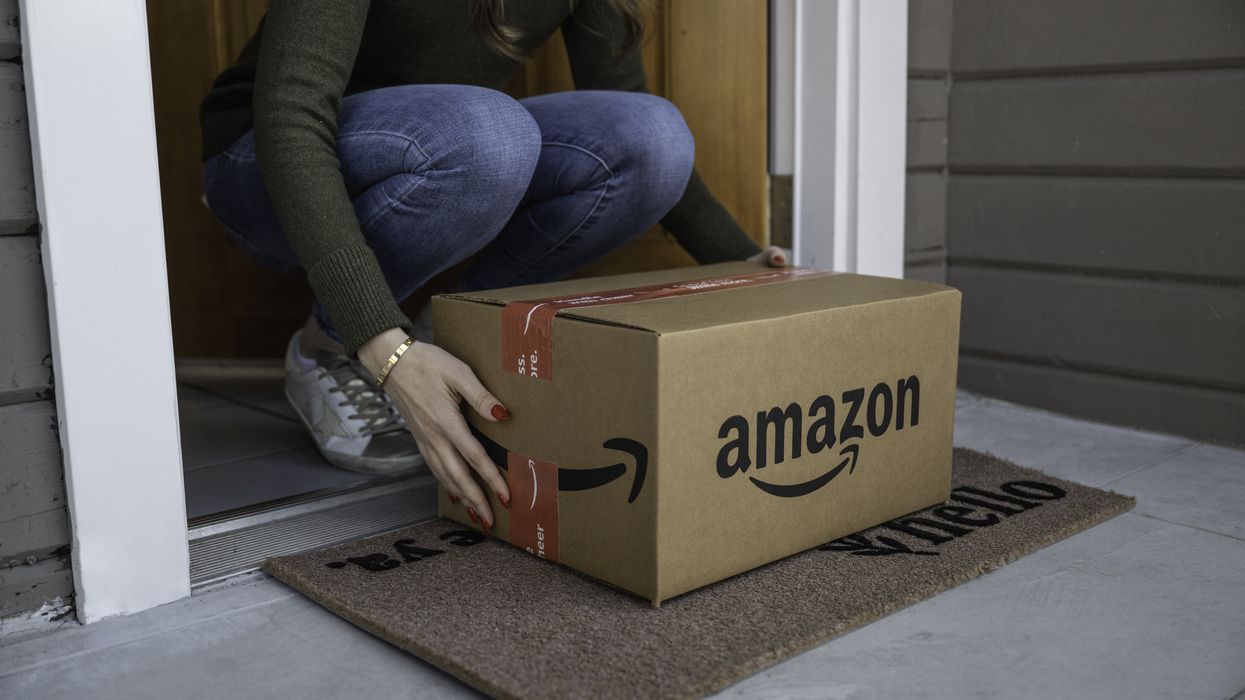Operations
22 May 2023
Amazon's regional reorg is about more than faster delivery
At Amazon, logistics is a customer-facing function.

(Photo courtesy of Amazon)
At Amazon, logistics is a customer-facing function.

(Photo courtesy of Amazon)
Welcome to Opportunity Fulfilled. This week, The Current is digging into the logistics transformation taking place at major retailers in 2023, and offering commentary on what these developments mean for the future of ecommerce.
The ecommerce expansion of the pandemic years led to massive growth of digital capabilities. Now, within online shopping poised to continue steadily gain share, retailers are reassessing what they built, and optimizing for profitability.
That’s playing out in logistics, where investments by the major retailers are seeking to create more efficiency in fulfillment and delivery.
The ecommerce market leader offers a primary case study. After nearly doubling the footprint of the shipping operation during the pandemic, Amazon reorganized its newly-expanded fulfillment network from a national to regional approach.
It’s ushering in a big change in the way the company moves packages, the Wall Street Journal reported this month:
Previously, if a package wasn’t available at a local fulfillment center, it would have to be shipped across the country.
Now, it has eight interconnected regions in smaller geographic areas. Each region has a broad selection of items, and can operate largely self-sufficiently.
It’s already leading to improvements in the form of faster deliveries and reduced costs. More than 76% of the products customers now order are from fulfillment centers in their region, up from 62% last year. On average, Items also have 12.5% less touchpoints before being delivered. Plus, the number of miles between the location where a product is fulfilled and the customer has been reduced by more than 15%.
It is also changing the front-end of the shopping experience. The WSJ reported that items that are closer to a customer may appear higher on search results.
As Amazon goes, so often goes ecommerce. The delivery network reorganization has big implications for the industry. Here are key takeaways:
It reorients the network around proximity. Amazon wants to continue to deliver items faster, which in turn increases customer satisfaction. Amazon VP of Transportation Udit Madan told the WSJ that increased speed leads to more likelihood that customers will buy an item, and return for more.
Behind the scenes, that often requires moving goods into place before they’re sold. Along with the facilities-level reorganization, Amazon is also improving advanced machine learning algorithms to predict what customers in various parts of the country will need. That guides inventory placement for specific regions.
As Nake Skiver of parcel and ecommerce delivery consulting firm LPF Spend Management put it at last year’s Home Delivery World conference, “It comes down to being able to accurately distribute inventory close to demand.”
It will help third-party sellers, too. The optimization of the transportation network also has a compounding effect across the business. Services provided to third-party sellers are one of the fastest growing areas of Amazon’s business, as the first quarter brought a 20% increase in revenue in this area. This category includes Fulfillment by Amazon (FBA), in which the company provides storage, fulfillment and delivery for sellers. So any improvements to the transportation network that bring better margins for Amazon as a whole also stand to lead to expanded profits in the services it provides seller services that represent their own business in addition to selling goods. Third-party sellers accounted for 59% of Amazon’s sales in the first quarter, so the company has every incentive to keep making improvements in this area.
It indicates Amazon still wants to get faster. The reorganization shows how Amazon is continuing to prioritize delivery speeds. Its sprawling logistics network has already ushered in two-day, one-day and same-day delivery, reshaping consumer expectations in the process. It’s a good bet that the latest transformation effort will once again change what consumers believe is possible in delivery across ecommerce.
It underscores that logistics is a customer-facing function. Amazon’s continued investment in transportation also highlights how important delivery is to Amazon’s value proposition. While the company went through multiple rounds of cost-cutting (and layoffs) over the last year, it is not compromising on the often-pricy proposition of moving goods to customer doors quickly. That’s because Amazon is not only focused on providing customers with products they want to buy, but offering an easy experience that is convenient. With a logistics network that has been expanded and now optimized after the pandemic build, Amazon is poised to keep delivering on the latter.
Amazon partnered with Hexa to provide access to a platform that creates lifelike digital images.
A 3D rendering of a toaster from Hexa and Amazon. (Courtesy photo)
Amazon sellers will be able to offer a variety of 3D visualizations on product pages through a new set of immersive tools that are debuting on Tuesday.
Through an expanded partnership with Hexa, Amazon is providing access to a workflow that allows sellers to create 3D assets and display the following:
Selllers don't need prior experience with 3D or virtual reality to use the system, according to Hexa. Amazon selling partners can upload their Amazon Standard Identification Number (ASIN) into Hexa’s content management system. Then, the system will automatically convert an image into a 3D model with AR compatibility. Amazon can then animate the images with 360-degree viewing and augmented reality, which renders digital imagery over a physical space.
Hexa’s platform uses AI to create digital twins of physical objects, including consumer goods. Over the last 24 months, Hexa worked alongside the spatial computing team at Amazon Web Services (AWS) and the imaging team at Amazon.com to build the infrastructure that provides 3D assets for the thousands of sellers that work with Amazon.
“Working with Amazon has opened up a whole new distribution channel for our partners,” said Gavin Goodvach, Hexa’s Vice President of Partnerships.
Hexa’s platform is designed to create lifelike renderings that can explored in 3D, or overlaid into photos of the physical world. It allows assets from any category to be created, ranging from furniture to jewelry to apparel.

The result is a system that allows sellers to provide a new level of personalization, said Hexa CEO Yehiel Atias. Consumers will have new opportunity see a product in a space, or what it looks like on their person.
Additionally, merchants can leverage these tools to optimize the entire funnel of a purchase. Advanced imagery allows more people to view and engage with a product during the initial shopping experience. Following the purchase, consumers who have gotten a better look at a product from all angles will be more likely to have confidence that the product matches their needs. In turn, this can reduce return rates.
While Amazon has previously introduced virtual try-on and augmented reality tools, this partnership aims to expand these capabilities beyond the name brands that often have 1P relationships with Amazon. Third-party sellers are an increasingly formidable segment of Amazon’s business, as they account for 60% of sales on the marketplace. Now, these sellers are being equipped with tools that enhance the shopping experience for everyone.
A video displaying the new capabilities is below. Amazon sellers can learn more about the platform here.
Hexa & Amazon - 3D Production Powerhousewww.youtube.com